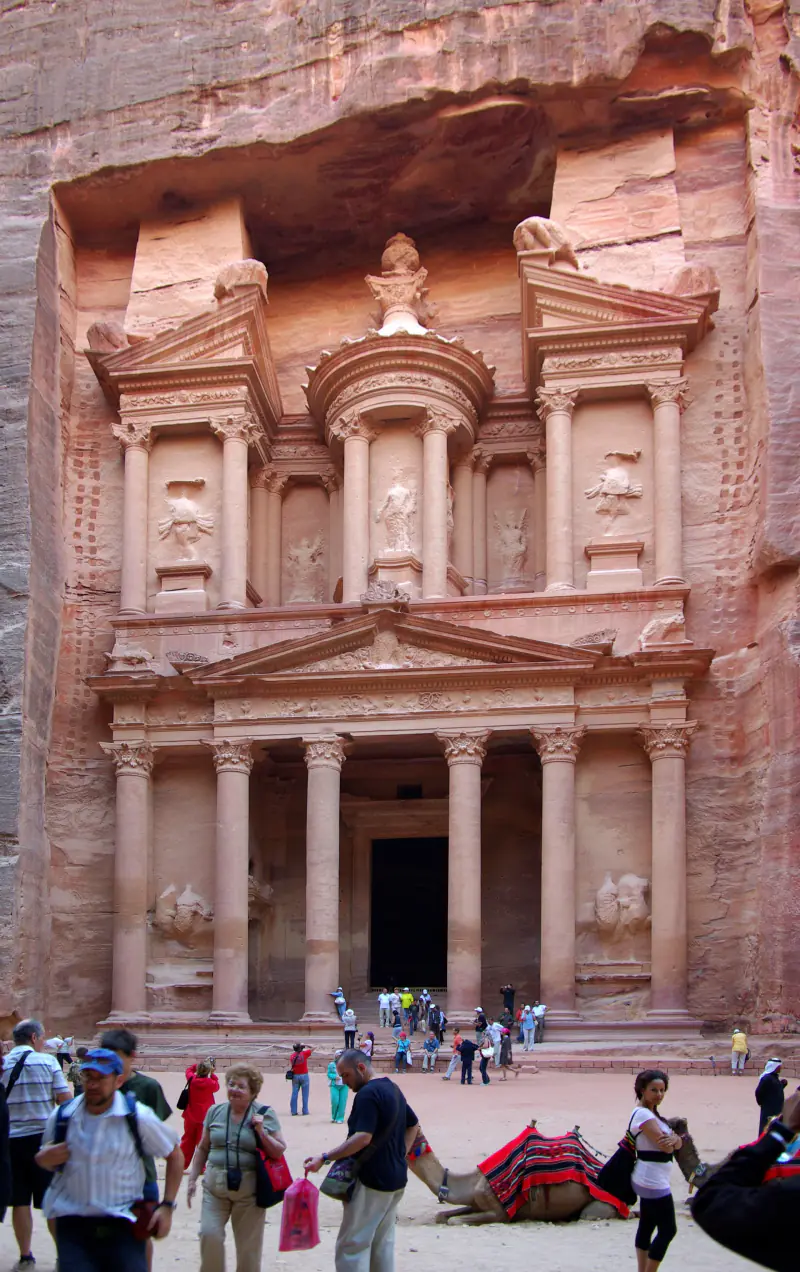UNESCO World Heritage Sites in Jordan
Heritage Overview
Jordan's UNESCO World Heritage sites preserve extraordinary archaeological treasures spanning millennia, from Nabataean rock-cut cities through Roman frontier fortifications to early Islamic desert complexes. The country's heritage showcases human adaptation to harsh desert environments, ancient trade networks connecting civilisations, and architectural innovation responding to challenging landscapes. Nabataean monuments demonstrate sophisticated water management, impressive rock-cut architecture, and artistic synthesis between multiple cultural influences along lucrative trade routes. These sites preserve exceptional examples of façade design, hydraulic engineering, and urban planning in desert settings. Roman period remains document frontier defence systems and provincial urban development. Early Islamic palaces and castles feature exceptional mosaics, frescoes, and architectural experimentation. Protected natural areas encompass unique desert ecosystems with remarkable biodiversity adapted to extreme conditions, seasonal wetlands supporting migratory birds, and dramatic geological formations. These sites demonstrate ongoing ecological processes and provide critical habitats for endangered species. Together, Jordan's heritage illustrates the strategic importance of Trans-Jordan regions throughout history, successive civilisations' adaptations to desert environments, and the cultural exchange occurring at the crossroads of Africa, Asia, and Europe through commercial and military networks spanning thousands of years.
Essential Information
Visa Requirements
Most foreign visitors require visas obtainable on arrival at Queen Alia International Airport and Aqaba for JOD 40 (approximately USD 56), valid for 30 days. Citizens of some GCC countries receive visa-free entry. The Jordan Pass, combining visa fees with entrance to major tourist sites, offers better value for stays exceeding two nights (JOD 70-80). E-visas are not available. Visitors using the Jordan Pass must stay three nights to waive visa fees. Land border crossings from Israel charge higher fees. Passports must be valid for six months beyond arrival. Extensions available through police stations for additional fees.
Currency
The official currency is the Jordanian Dinar (JOD), one of the world's strongest currencies with stable exchange rates. Credit cards (Visa, Mastercard) are widely accepted in hotels, restaurants, larger shops, and tourist sites. ATMs are common in cities and tourist areas, dispensing dinars with typical limits around 300-400 JOD daily and charging fees for foreign cards. Cash remains important for smaller establishments, markets, taxis, and rural areas. US dollars are sometimes accepted at tourist sites. Currency exchange is available at airports, banks, and exchange offices. Bring sufficient cash for remote heritage sites. Tipping is customary for guides and service staff.
Language
The official language is Arabic, spoken with a distinctive Jordanian dialect. English is widely spoken, particularly in urban areas, tourist destinations, and amongst younger generations and educated professionals. Tourism infrastructure has excellent English support with signage, guides, and information commonly available in English. French is sometimes understood by older generations. Tourist sites, hotels, and restaurants typically employ English-speaking staff. Jordan's proximity to Western travellers has fostered strong English language education. Learning basic Arabic phrases (Marhaba for hello, Shukran for thank you) is appreciated and facilitates positive interactions, though communication in English presents minimal difficulties throughout tourist areas.
Climate
Jordan experiences hot, dry desert climate with significant regional variations. Summer (May-September) brings extreme heat with temperatures regularly exceeding 35-40°C in lower elevations and desert areas, whilst Amman and highland regions remain slightly cooler around 30-35°C. Winter (November-March) offers pleasant conditions with temperatures ranging 8-18°C, occasionally dropping below freezing at night in highlands with rare snowfall. Spring (March-May) and autumn (September-November) provide ideal visiting conditions with comfortable temperatures and minimal rainfall. The Dead Sea region remains hot year-round. Rainfall is minimal and concentrated in winter. The best visiting period is March-May and September-November, offering comfortable temperatures.
